For the San Francisco Chronicle, I wrote about the Chartreuse shortage and how some bartenders are looking locally to Brucato Chaparral as a stand-in.
For the San Francisco Chronicle, I wrote about the Chartreuse shortage and how some bartenders are looking locally to Brucato Chaparral as a stand-in.
It's time for the annual Alcademics drink book round-up! Below are all the books that have come to my attention in 2020. I don't follow wine/beer closely so there are only a few in that section.
The links below are to Amazon and to Bookshop.org. If you buy stuff after clicking on a link, I may receive a referral fee, thanks! If there is just one link, that's to Amazon as I only started using Bookshop mid-way through the year – you can always click over to Bookshop and search there. Bookshop.org allows you to order from small bookstores directly, or buy from a general fund that supports independent bookstores.
Whiskey Books
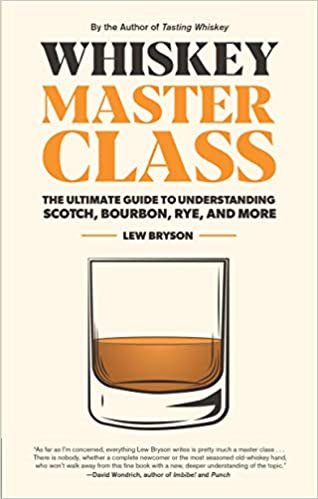 Whiskey Master Class: The Ultimate Guide to Understanding Scotch, Bourbon, Rye, and More by Lew Bryson
Whiskey Master Class: The Ultimate Guide to Understanding Scotch, Bourbon, Rye, and More by Lew Bryson
The Definitive Guide to Canadian Distilleries: The Portable Expert to Over 200 Distilleries and the Spirits they Make (From Absinthe to Whisky, and Everything in Between) by Davin de Kergommeaux and Blair Phillips
Which Fork Do I Use with My Bourbon?: Setting the Table for Tastings, Food Pairings, Dinners, and Cocktail Parties by Peggy Noe Stevens and Susan Reigler
Whisky, it's not rocket science by Mickael Guidot
Canadian Spirits: The Essential Cross-Country Guide to Distilleries, Their Spirits, and Where to Imbibe Them by Stephen Beaumont and Christine Sismondo
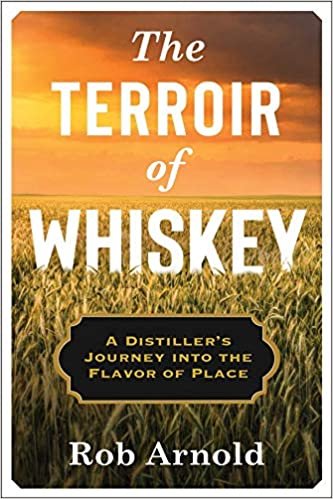 Scotch: A Complete Introduction to Scotland’s Whiskies by Margarett Waterbury buy on: [Amazon][Bookshop]
Scotch: A Complete Introduction to Scotland’s Whiskies by Margarett Waterbury buy on: [Amazon][Bookshop]
The Curious Bartender’s Guide to Malt, Bourbon & Rye Whiskies by Tristan Stephenson [Amazon] [Bookshop]
The Sazerac by Tim McNally [Amazon] [Bookshop]
Beginner's Guide to Whiskey: Traditions, Types, and Tastes of the Ultimate Spirit by Sam Green [Amazon][Bookshop]
The Terroir of Whiskey: A Distiller's Journey Into the Flavor of Place by Rob Arnold [Amazon][Bookshop]
American Spirit: Wild Turkey Bourbon from Ripy to Russell by David Jennings [Amazon][Bookshop]
Other Spirits: Gin, Rum
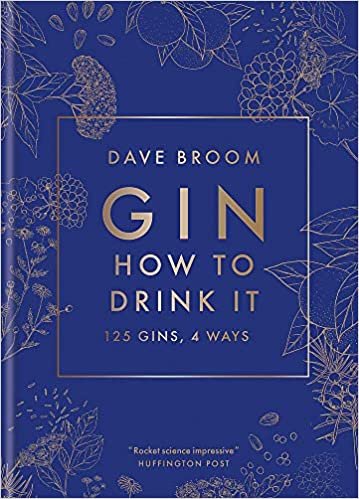 Gin: How to Drink it: 125 Gins, 4 Ways by Dave Broom [Amazon]
Gin: How to Drink it: 125 Gins, 4 Ways by Dave Broom [Amazon]
The Curious Bartender’s Guide to Rum by Tristan Stephenson [Amazon] [Bookshop]
Brand Books
Seedlip Cocktails: 100 Delicious Nonalcoholic Recipes from Seedlip & The World's Best Bars by Seedlip
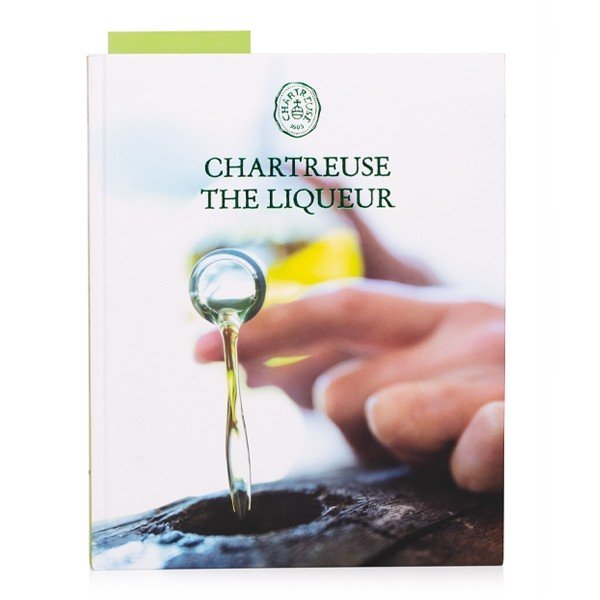 Chartreuse, The Liqueur [CocktailKingdom]
Chartreuse, The Liqueur [CocktailKingdom]
A Long Stride: The Story of the World's No. 1 Scotch Whisky by Nicholas Morgan buy on: [Amazon][Bookshop]
Science Food and Drink Books
 Science and Cooking: Physics Meets Food, From Homemade to Haute Cuisine by Michael Brenner, Pia Sörensen, David Weitz [Amazon][Bookshop]
Science and Cooking: Physics Meets Food, From Homemade to Haute Cuisine by Michael Brenner, Pia Sörensen, David Weitz [Amazon][Bookshop]
Nose Dive: A Field Guide to the World's Smells by Harold McGee: [Amazon][Bookshop]
The Flavor Equation: The Science of Great Cooking Explained in More Than 100 Essential Recipes by Nik Sharma [Amazon][Bookshop]
Beer, Wine, Vermouth, Sake, Fermentation
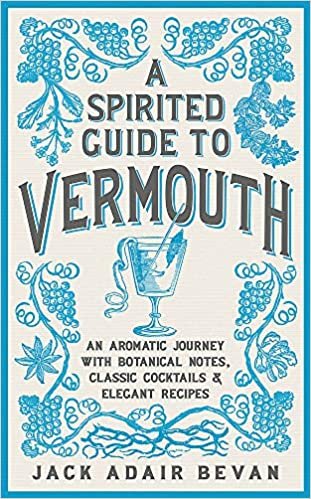 Beer: Taste the Evolution in 50 Styles by Natalya Watson
Beer: Taste the Evolution in 50 Styles by Natalya Watson
A Spirited Guide to Vermouth: An Aromatic Journey with Botanical Notes, Classic Cocktails and Elegant Recipes by Jack Adair Bevan
How to Make Hard Seltzer: Refreshing Recipes for Sparkling Libations by Chris Colby [Amazon] [Bookshop]
Wine, Unfiltered: Buying, Drinking, and Sharing Natural Wine by Katherine Clary [Amazon] [Bookshop]
Hugh Johnson s Pocket Wine Book by Hugh Johnson [Amazon]
The Wine Game by Zeren Wilson [Buy]
The Japanese Sake Bible: Everything You Need to Know About Great Sake (With Tasting Notes and Scores for Over 100 Top Brands) by Brian Ashcraft [Amazon][Bookshop]
Journey of Sake: Stories and Wisdom from an Ancient Tradition [Amazon]
Fermentation as Metaphor by Sandor Ellix Katz [Amazon] [Bookshop]
Rabbinic Drinking: What Beverages Teach Us About Rabbinic Literature by Jordan D. Rosenblum
How to Drink: A Classical Guide to the Art of Imbibing (Ancient Wisdom for Modern Readers) by Vincent Obsopoeus [Amazon] [Bookshop]
Non-Alcoholic Drinks
How to Drink without Drinking: Celebratory alcohol-free drinks for any time of the day by Fiona Beckett [Amazon] [Bookshop]
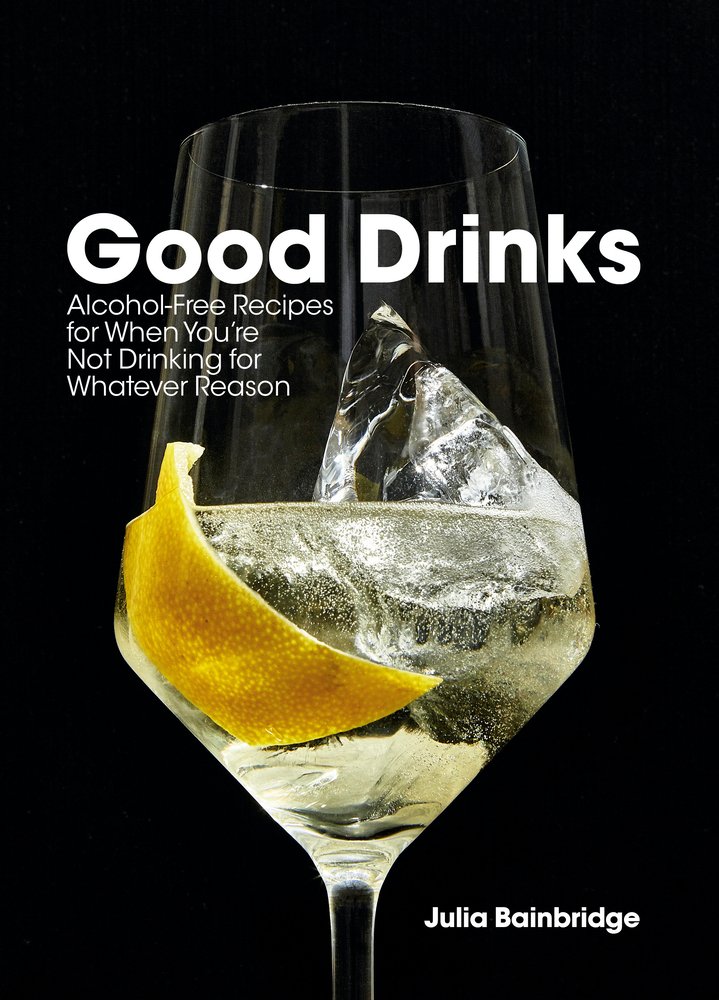 Good Drinks: Alcohol-Free Recipes for When You're Not Drinking for Whatever Reason by Julia Bainbridge [Amazon] [Bookshop]
Good Drinks: Alcohol-Free Recipes for When You're Not Drinking for Whatever Reason by Julia Bainbridge [Amazon] [Bookshop]
FIZZ: A Beginners Guide to Making Natural, Non-Alcoholic Fermented Drinks
by Elise van Iterson and Barbara Serulus
Zero: A New Approach to Non-Alcoholic Drinks [Amazon] [The Aviary]
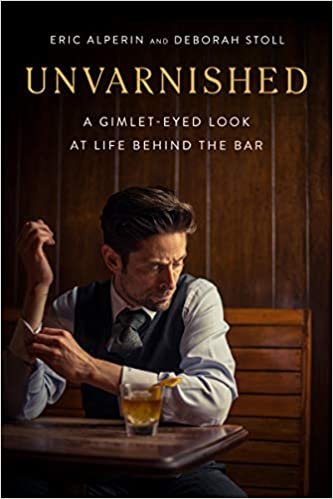 Bartending: Narrative and Professional
Bartending: Narrative and Professional
Unvarnished: A Gimlet-eyed Look at Life Behind the Bar by Eric Alperin and Deborah Stoll
Bartender as a Business: Building Agency from Craft by Jason Littrell [Amazon][Bookshop]
Botanical Focus and Witchcraft
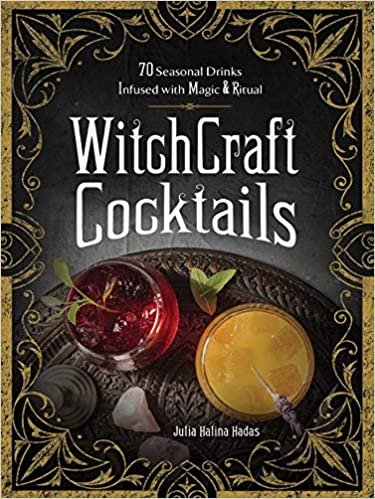 Garden to Glass: Grow Your Drinks from the Ground Up by Mike Wolf
Garden to Glass: Grow Your Drinks from the Ground Up by Mike Wolf
Wild Remedies: How to Forage Healing Foods and Craft Your Own Herbal Medicine by Rosalee de la Forêt and Emily Han
WitchCraft Cocktails: 70 Seasonal Drinks Infused with Magic & Ritual by Julia Halina Hadas [Amazon] [Bookshop]
Potions, Elixirs & Brews: A modern witches' grimoire of drinkable spells by Anais Alexandre [buy on Bookshop ] [buy on Amazon]
Blackthorn's Botanical Brews: Herbal Potions, Magical Teas, and Spirited Libations by Amy Blackthorn [buy on Bookshop ] [buy on Amazon]
Cocktail Books
General/Classic/Historic Cocktail Books
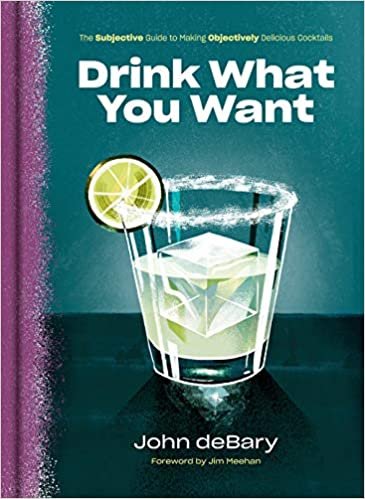 Vintage Spirits and Forgotten Cocktails: Prohibition Centennial Edition: From the 1920 Pick-Me-Up to the Zombie and Beyond – 150+ Rediscovered Recipes … With a New Introduction and 66 New Recipes by Ted Haigh (Author)
Vintage Spirits and Forgotten Cocktails: Prohibition Centennial Edition: From the 1920 Pick-Me-Up to the Zombie and Beyond – 150+ Rediscovered Recipes … With a New Introduction and 66 New Recipes by Ted Haigh (Author)
Drink What You Want: The Subjective Guide to Making Objectively Delicious Cocktails by John deBary
Spirited: Cocktails from around the World by Adrienne Stillman [Amazon] [Bookshop]
The New Craft of the Cocktail: Everything You Need to Know to Think Like a Master Mixologist, with 500 Recipes by Dale DeGroff [Amazon] [Bookshop]
On the House: Over 100 Essential Tips and Recipes for the Home Bartender by Cider Mill Press buy on: [Amazon][Bookshop]
Classic Cocktails by Brian D. Hoefling [Amazon][Bookshop]
Splash: Modern Classic Cocktails by Ivy Mix (Author), Whoo Kid [Amazon]
CO Specs: Recipes & Histories of Classic Cocktails by Cas Oh [Amazon]
Themed Cocktail Books
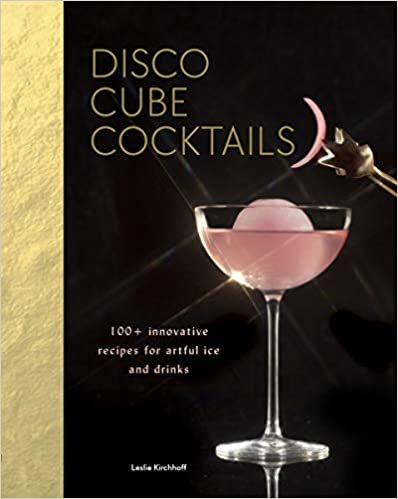 The Good Reverend's Guide to Infused Spirits: Alchemical Cocktails, Healing Elixirs, and Cleansing Solutions for the Home and Bar by Steven Grasse, Sonia Kurtz, Michael Alan
The Good Reverend's Guide to Infused Spirits: Alchemical Cocktails, Healing Elixirs, and Cleansing Solutions for the Home and Bar by Steven Grasse, Sonia Kurtz, Michael Alan
Camp Cocktails: Easy, Fun, and Delicious Drinks for the Great Outdoors by Emily Vikre
Drinking with Chickens: Free-Range Cocktails for the Happiest Hour by Kate E. Richards
Easy Tiki: A Modern Revival with 60 Recipes by Chloe Frechette
Disco Cube Cocktails: 100+ innovative recipes for artful ice and drinks by Leslie Kirchhoff
Essential 3-Ingredient Cocktails: 75 Classic And Contemporary Drinks To Make At Home by Amy Traynor
Pink Gin: More than 30 pink-hued cocktails
Drink What You Want: The Subjective Guide to Making Objectively Delicious Cocktails.
Behind the Bar: 50 Cocktail Recipes from the World's Most Iconic Hotels by Alia Akkam [Amazon] [Bookshop]
Fizz: 80 Joyful Cocktails and Mocktails for Every Occasion by Olly Smith [Amazon] [Bookshop]
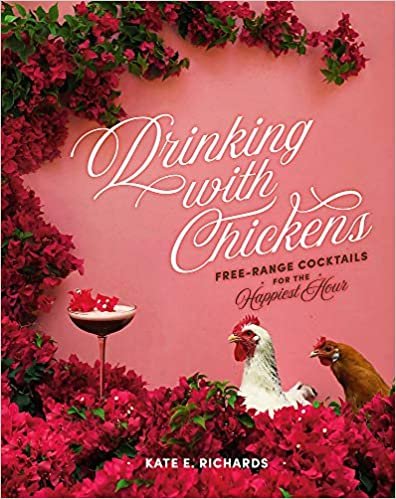 Beautiful Booze: Stylish Cocktails to Make at Home by Natalie Migliarini and James Stevenson [Amazon] [Bookshop]
Beautiful Booze: Stylish Cocktails to Make at Home by Natalie Migliarini and James Stevenson [Amazon] [Bookshop]
The Cocktail Dictionary: An A-Z of cocktail recipes, from Daiquiri and Negroni to Martini and Spritz by Henry Jeffreys [Amazon] [Bookshop]
Peaky Blinders Cocktail Book: 40 Cocktails Selected by The Shelby Company Ltd by Sandrine Houdre-Gregoire [Amazon] [Bookshop]
The Shaken and the Stirred: The Year's Work in Cocktail Culture (The Year's Work: Studies in Fan Culture and Cultural Theory) Edited by Stephen Schneider and Craig N. Owens [Amazon] [Bookshop]
T𝗵𝗲 𝗧𝗼𝗮𝘀𝘁 𝗼𝗳 𝘁𝗵𝗲 𝗥𝗲𝗺𝗼𝘁𝗲 𝗛𝗼𝘀𝘁𝘀 by Grade A Fancy Magazine [buy]
Star Trek Cocktails: A Stellar Compendium by Glenn Dakin buy on: [Amazon][Bookshop]
Classy as Fuck Cocktails: 60+ Damn Good Recipes for All Occasions buy on: [Amazon][Bookshop]
Shake Strain Done: Craft Cocktails at Home by J. M. Hirsch buy on: [Amazon][Bookshop]
Tequila & Tacos: A Guide to Spirited Pairings by Katherine Cobbs buy on: [Amazon][Bookshop]
Queer Cocktails: 50 Cocktail Recipes Celebrating Gay Icons and Queer Culture by Lewis Laney [Bookshop]
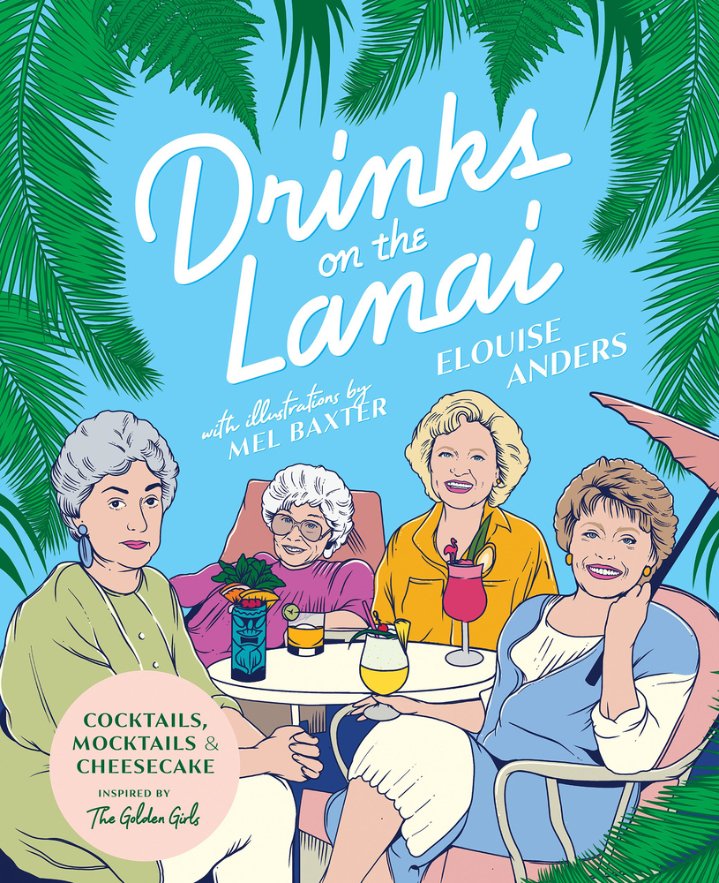 Drinks on the Lanai: Cocktails, Mocktails And Cheesecake Inspired By The Golden Girls by Elouise Anders [Amazon][Bookshop]
Drinks on the Lanai: Cocktails, Mocktails And Cheesecake Inspired By The Golden Girls by Elouise Anders [Amazon][Bookshop]
The Aviary: Summer Cocktails [The Aviary]
Give Me Liberty and Give Me a Drink!: 65 Cocktails to Protest America’s Most Outlandish Alcohol Laws by C. Jarrett Dieterle
Very Merry Cocktails: 50+ Festive Drinks for the Holiday Season by Jessica Strand [Amazon][Bookshop]
Winter Drinks: Over 75 recipes to warm the spirits including hot drinks, fortifying toddies, party cocktails and mocktails [Amazon][Bookshop]
Bar L.M. by Lindsay Matteson [etsy]
How to Drink Like a Royal by Albert W. A. Schmid [Amazon][Bookshop]
Have Yourself a Merry Little Cocktail: 80 Cheerful Tipples to Warm up Winter by Emma Stokes [Amazon][Bookshop]
Düngeonmeister: 75 Epic RPG Cocktail Recipes to Shake Up Your Campaign by Jef Aldrich, Jon Taylor [Amazon][Bookshop]
Drink Books Tied to Places
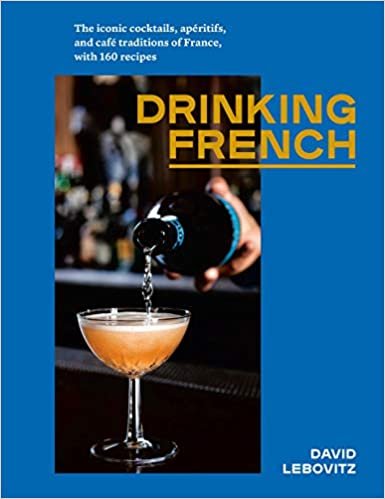 Distilled in Vermont: A History & Guide with Cocktail Recipes by Chris Maggiolo [Amazon] [Bookshop]
Distilled in Vermont: A History & Guide with Cocktail Recipes by Chris Maggiolo [Amazon] [Bookshop]
The United States of Cocktails: Recipes, Tales, and Traditions from All 50 States (and the District of Columbia) by Brian Bartels [Amazon] [Bookshop]
Behind Bars: High Class Cocktails Inspired by Low Life Gangsters by Vincent Pollard [Amazon] [Bookshop]
Spirits of Latin America: A Celebration of Culture & Cocktails, with 100 Recipes from Leyenda & Beyond by Ivy Mix
Drinking French: The Iconic Cocktails, Apéritifs, and Café Traditions of France, with 160 Recipes by David Lebovitz
The Pikes Cocktail Book: Rock 'n' roll cocktails from one of the world's most iconic hotels by Dawn Hindle
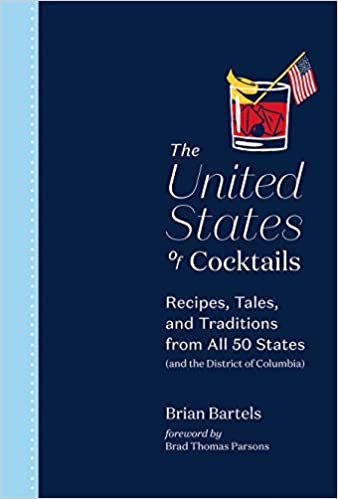 Apotheke: Modern Medicinal Cocktails by Christopher Tierney, Erica Brod [Amazon][Bookshop]
Apotheke: Modern Medicinal Cocktails by Christopher Tierney, Erica Brod [Amazon][Bookshop]
Drink-Culture Related Books
The Book of Ichigo Ichie: The Art of Making the Most of Every Moment, the Japanese Way by Héctor García and Francesc Miralles
This was the last of 12 armagnac houses I visited and we certainly saved the largest until the end. Domaine Du Tariquet is a gargantuan operation in the Bas Armagnac, but they mostly make table wine.
We walked all around this property, up on top of huge wine tanks (I'm scared of heights but I do it for you, dear reader), to a super modern bottling line, and then to the completely incongruously ridiculously small room in the middle of it all, where the single wood-fired armagnac still is slowly churning out eau de vie.
The family owns 900 hectares of land for both table wine and armagnac. They grow and distill the usual Ugni Blanc, Baco, and Folle Blanche (no Colombard as far as I know), but also Plant de Graisse. This grape varietal is one of ten allowed for armagnac, but this is the first place I heard of that actually used any but the top four. They say they began planting these when the future of Baco was uncertain (at one point they were going to have to get rid of all Baco vines because it's a hybrid).
For their armagnac they use only free-run juice and allow a long skin contact maceration before fermentation. For 4-5 days it sits on lees in temperature-controlled tanks. The distillation is also slow and takes 3-4 weeks. At the end of fermentation they try to distill the wine for armagnac as quickly as possible.
As is typical for armagnac, they distill on "light lees." As mentioned, their still is wood-fired, which seems pretty crazy given all the technology they're surrounded by. They have to add wood to the fire every 20 minutes or so. (They are purchasing an additional still soon, but I'm not sure where they'll put it.)
The still is a mobile armagnac continuous still, but it stays in place in the small room where it lives. During the distillation season, they run the still 24 hours but stop once each week to clean it.
They distill up to 55% ABV.
They have between four and five thousand barrels aging.
For dilution, they use the 'petite des eaux, which is a mix of water fortified with brandy to prevent spoilage at 19% ABV in their case. The water ages in barrels alongside the armagnac barrels it will dilute.
All their varietals are distilled and aged separately, not blended in the barrel. We visited an aging warehouse located at another family-owned property, a castle where our host Remy Grassa's father lives when he's in town (as one does). Most of their barrels are not made of local Gascony oak.
Before bottling they chill filter to -8 degrees Celsius and run it through a cellulose pad.
Unlike many brands of armagnac, they do not specialize in vintages, only releasing three or four of them every 10 years.
Tariquet is the brand of armagnac I see most often mixed into cocktails in San Francisco. Here are some probably-useless notes on stuff we tasted:
Armagnac Gelas produces some unique armagnacs: in addition to the standard blends and vintage bottlings, they also produce single-varietal bottlings (and were the first brand to do so back in the 1950s) and armagnacs with barrel finishes.
Our host for the visit was Philippe Gelas, a descendant of the brand founder. Like many armagnac houses, they do not own vineyards (actually his brother does, but they buy it from him) and do not distill themselves, but purchase eau de vie and age and blend it.
Philippe says that different grapes used in armagnac grow best in different soils:
Gelas has only been using Colombard for the past five years. It's not ready to be launched in their single-varietal line yet however.
They purchase from four suppliers, one of which is Philippe's brother. Though they don't distill, the warehouse (as usual, tucked around the corner from the office building) has a square column still on display that was built by Philippe's grandfather. He says it was built specifically to reduce the heady heaviness in distillation of armagnac.
When having wine distilled, they distill Ugni Blanc and Colombard to 60% ABV, and Baco and Folle Blanche lower to 54-56%. Philippe says you get more finesse out of Ugni Blanc this way.
Unlike many producers who call for a heavy toast, they have their barrels prepared with a medium toast.
We then popped to the tasting area – a little corner of a souvenir shop- and tasted a ton of armagnac. Here are some quick and probably useless notes:
Armagnac Delord is located at the edge of the town of Lannepax in the Bas Armagnac region. They took us up a vineyard-covered hill for a view looking down upon the town.
I visited the property in November of 2014, but unlike many of the other armagnac houses they were not planning to begin distilling for the season until January 5th. Their plan was to distill for 5 weeks.
They make two brands: Delord and Marie Duffau. Though they do make some traditional products like prunes in wine and floc de gascone (the armagnac version of pinneau des charantes), they do not make any table wine.
Delord owns 42 hectares in 5 parcels around the village. They grow four grapes:
They are moving away from Colombard, however, toward Baco. (On my visit moving away from Colombard seemed to be happening at a few houses.)
Delord is one of three armagnac houses (along with Janneau and Samalens) that uses pot stills for the armagnac, along with the traditional armagnac continuous still. About 20% of Delord's wine is double-distilled.
Double pot distilled eau de vie at Delord is used in:
Their pot stills take about 8 hours per distillation, and they distill the wine up to 70% ABV, which is pretty standard, and put it into barrels at a reduced 65%.
One of their continuous armagnac stills dates back to 1900. Their armagnac stills have plates inside, as is normal. They prefer to use the spider-shaped plates as they say they get more mixing between the gas vapor and the liquid wine with them.
The old still from 1900 distills up to about 58% ABV, while the newer one goes up to 60-62% after the single distillation. They mix the distillates from these two stills together and put it into barrels at 55% ABV.
Aging brandy is aerated at the same rate whether the brandy came from a pot or column still, but they say they have to dilute the armagnac column still brandy more slowly than the stuff from the pot still.
They have 4 aging cellars; three of them crammed around the office building on the edge of town.
Unlike most of the armagnac houses I visited, they use just 10% local Gascony oak to age their brandy, the majority of it being Limousin oak. They give it a high toast. While aging they have about a 2% angels' share.
Last year they sold 200,000 bottles, 80% of them blends and the rest vintages.
We had time to create the wax seal for the bottle. Bam! I should get hired doing that, as long as you can drink on the job.
In the armagnac region most of the stills are continuous stills, and they run them nearly 24/7 throughout the distilling season which is November through January, though legally they can distill through March 31.
Because the stills are on and someone has to be there watching over them anyway, many of the houses throw distillery dinners during the season. They invite guests to come have dinner (and drinks of course) while the stills run in the background. On occasion they'll need to change the barrel that the still is emptying into.
That was the experience we had at Domaine Boingneres. Our dinner was in the tiny room with one odd-shaped continuous armagnac still, served on a fold-out table by a single chef-caterer. Yes to all of it.
Domaine Boingneres owns about 22 hectares. 14 of them are Folle Blanche, while the rest are split between Ugni Blanc and Colombard. Because of their specializing in Folle Blanche, they use only a medium toast to their barrels to not mask its flavor.
Their still resembles a pot still but there are 6 plates inside.
On the night we visited they were distilling Folle Blanche grapes. The wine came in at 78.4% ABV and they were distilling it to 52%, which is pretty low even for armagnac.
This year they were planning to distill 40 barrels. While distilling they can make 2 barrels in 24 hours, so this means that it their distilling season will be about 20 days long.
While distilling, the distiller would dip a wooden stick into the barrel to see how full it was, and based on this he'd know how much longer to keep filling it before exchanging the full barrel sitting beneath the still with a new empty one.
This is a very well-respected armagnac house. They do not chill filter any of their armagnacs nor add caramel coloring. The only product they reduce with water to bottle strength is the 5 year old.
Because they don't reduce their aging brandy with water, the don't do the annual aeration and dilution of the barrels that pretty much every other armagnac house we visited does. The do top off the barrels while they're aging though, and to do this they use the brandy stored in the first and last barrels distilled that season as they're most likely to be the outliers. Distributing them across all the barrels of the season over the years would lessened the impact of any differences.
To get to the aging warehouse, we put on our coats and were led by flashlight across the grass to a barn. There we spent a lot of time dipping into barrels and trying armagnac from 1986, 1972, 1976, 1979, and other years.
If I could spend the season dining by the still and dipping into barrels, I wouldn't mind French winters at all.
Armagnac Dartigalongue also claims to be the oldest brand of armagnac in Bas Armagnac as does their nearby neighbor Casterede. They're a rather large brand, exporting about 60% of the 50,000 bottles they produce annually. They also make the brand Croix De Salles.
Dartigalongue does not own their own vineyards nor distill their own brandy, but has long-term contracts with their four winegrowers in Bas Armagnac and their distillers. They use the famous mobile distillers, which I assume distill on site at the wineries rather than here where where it's all about aging.
Of the big four grape varietals (baco, ugni blanc, folle blanche, and colombard) they only don't use the last one.
Their wine is distilled by the roving distillers to 60% ABV.
They typically use only barrels made of local Gascony oak but now are experimenting with several other barrels – we saw a small part of the warehouse with the same eau de vie aging in four different barrels as a test. They are also testing steam-assembled barrels, which I believe is the faster, more modern way to bend barrel staves in bigger cooperages.
In armagnac, producers typically reduce with water and aerate the aging brandy on a regular basis, and everyplace seems to do it a little bit differently. Here at Dartigalongue, every two years they aerate the brandy for half a day and reduce it by 2% ABV for the first 10 years. They say this created the special taste of that brand. After ten years, they only reduce the armagnac every 5-7 years or so.
Our host Benoît Hillion said that if they didn't aerate armagnac, it would be tougher and less ethereal, less open, more aggressive, and have a shorter finish.
The Dartigalongue house is at street level at the edge of a small old town, and as it typical in armagnac that house is stuffed full of flammable liquid: We walked upstairs from the office to find their dry cellar, then down into the basement to find their cool, humid cellar.
Hillion described the house style as "aromatic but not without agressivity; spicenss of course, and a long aftertaste." I often found the house style to be spicy-minty and not as green and mushroomy as other armagnacs. The 1975 vintage I thought tasted of tarragon, while a 1955 vintage was creamy, sandy, and spicy.
After the tasting we walked across the street to another small building we own. Downstairs was a museum of sorts, with lots of vintage armagnac paraphernalia including racy/misogynist menu ads from long ago, and cruise ship wine lists and very old demijohns of armagnac upstairs.
I had the chance to visit the Chateau Castarede, a 17th Century estate/castle in the Bas Armagnac region where they produce armagnac. Florence Castarède was our host for the day. She says they're the oldest armagnac brand, but so too does Dartigalongue.
They make three armagnac labels:
They grow the grapes for their products, primarily Ugni Blanc and Colombard grapes. The region has the sandy soils full of fossils and shells of the former ocean floor.
They have two stills; one gas-powered, one wood-fueled.
While we were there, the cellarmaster was doing the annual inspection of the barrels of aging armagnac, tasting each one and noting whether or not it needed to be aerated.
Our brief visit there involved mostly a tour around the castle and then lots of time in their newest barrel room, where we spent a long time drinking barrels from our birth years. The older I get, the harder that is to find.
I had a chance to visit the cooper M. Gilles Bartholomo in the armagnac region of France. There was no sign out front and we were worried that we would miss it, but luckily a stack of air-drying barrel staves near the road clued us in.
This very small cooperage makes only barrels from local Gascony oak. On the property the staves are stacked up to air dry for between two and three years.
On the day we visited it had been raining, so we wondered if that would slow the drying process. It turns out that rain is a good thing: it washes out some of the tannins. You may be able to see in this picture a smear of dark brown tannins running off the stack of wood.
Wood that had been air drying longer had less of the tannin run-off in front of it. In front of one stack, there was a small puddle filled with tannin water. I convinced one of our hosts that she needed to taste it first lest it be poison, then I gave it a try: it was slightly woody but very tannic and drying on the tongue.
This facility produces a whopping 4 barrels per day, between 400 and 700 annually. The cooper says that contrary to rumor, there is no shortage of wood for barrels at the moment. Barrels cost 750 euros each.
The cooper says that most armagnac barrel buyers request a heavy toast to their barrels. (Remember that for French oak barrels, they are not charred like in bourbon, but toasted.)
All the excess sawdust from the process is sucked up in a ventilation system then deposited out into a shed, where a machine compresses it into fireplace logs.